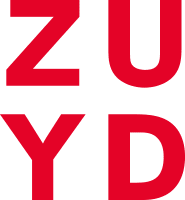On the background of the Syrian conflict started in 2011, camps were set to host temporarily the waves of displaced Syrians kept flowing inside Kurdistan Region of Iraq (KRI). Majority of these populations are from Kurdish background, seeking refuge in what they believe to be a part of the “home-land” of the Kurdish Nation. In addition to their ethnic affiliation, shared history, language and cultural similarities of the host community, the region at the time of displacement presented economic opportunities, creating a proper destination for most of the displaced Syrian- Kurds. With the prolonged displacement, unclear future of the situation in their original towns and lack of economic opportunities in stable areas, majority of the refugees seem to be convinced
that these camps are their new homes. In attempts to retune the tempo of a “situational normalcy”, a sense of home is being constructed within refugee-hood, camp dwellers utilize different place making methods, trying to bridge gaps created by the rupture of displacement, and difference of what is believed to be a priority in their dwellings. The socio-spatial transformation has been taking place in the standardized camp layout, changing the pre-fixed typologies, to fit the cultural norms. Recently, as UNHCR policies for “exit strategies” regarding Syrian Refugee camps in KRI are based on moving towards “more sustainable solutions”, they have been (including other NGOs and local organizations working under their umbrella) supporting refugees with
general construction guidelines, building typologies and different means to construct their own residential units. But the conflict between what is provided and designed for and what is changed by refugees is present in the physical environment. As space, the container of everyday life, mirrors the reality, the camp space plays the medium where the visual representations of this conflict is being reified. This paper aims to trace spatially the process of home making in the camp’s pre-fixed physical environment, in different Syrian refugee camps in Kurdistan region of Iraq. Based on field visit and interviews, narratives and stories told by families and UNHCR personnel from refugee camp, this paper attempts to untangle the complexity of “who is doing what” in the camp, linking the changes in the physical environment to their original agents and actors, providing a comparative analysis of what is being planned for, what is provided and what is being changed by refugees, in order to familiarize, relate and recover.
